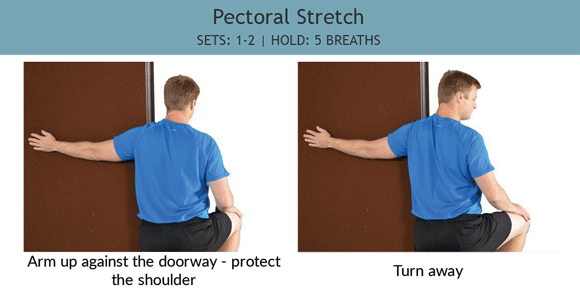Fall is around the corner and along with the cooler temperatures comes the excitement of going back to school. Along with returning to school, many people are also returning to the office right now. What these both have in common is a return to a lot sitting at a desk, working at a computer and, unfortunately, neck and back pain. Sitting at a desk lends itself to poor postures for prolonged periods of time. Fortunately, there are things you can do to reduce and even prevent pain from desk sitting.
No postures are inherently bad. The problem comes from being in any position for too long and a lack of varied movement. We sit at a desk for 12+ years in school, and then many of us continue on to jobs that also require a lot of desk sitting. Over time, prolonged postures lead to joint stiffness and postural imbalance. This results in a pain, a loss in range of motion, muscle imbalances, muscle compensation and altered force-couple relationships, which lead to a reduced ability to generate forces.
The most common postural imbalance is called “upper crossed syndrome”. This posture commonly results from desk sitting and involves a forward head, forward and rounded shoulders and increased upper spine flexion or curving. With a lack of varied movement, this faulty posture results in neck and back pain, a burning sensation of the upper back, weakened neck and shoulder muscles, and tightened muscles around the neck and traps.
Fortunately, whether you have been sitting at a desk for most of your life or are just starting, there are actions you can take to reduce your risk of pain and stiffness:
- Get up and move! Try and take movement breaks or go for a walk. Aim to move around every 20 minutes. The more often you can change position, the better!
- Postural checks. Set an alarm on your phone or smartwatch to remind you to check your posture throughout the day, and make adjustments. Your head should align right over your torso/spine, your shoulders should be in line with your torso and relaxed and you should be sitting up tall.
- Stretch! Give these stretches a try throughout the day, either at the office or at home. Hold each stretch for 5 breaths. Here are some exercises that can help you:
 CLICK HERE TO SEE ALL EXERCISES
CLICK HERE TO SEE ALL EXERCISES
Contact me today for your individualized postural and ergonomic assessment. This assessment will be used to create a customized and focused program to help you improve your posture and reduce your pain and stiffness. Call/text 403.229.0129 or email me here.
Crystal Bartkowski
Athletic Therapy
